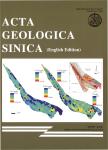From Mantle Transition Zone with Microstructures: A New Paradigm in Ophiolite Studies
From Mantle Transition Zone with Microstructures: A New Paradigm in Ophiolite Studies作者机构:Department of Earth and Environmental SciencesUniversity of Texas at ArlingtonTX 76019USA
出 版 物:《Acta Geologica Sinica(English Edition)》 (地质学报(英文版))
年 卷 期:2020年第94卷第S1期
页 面:53-54页
核心收录:
学科分类:0709[理学-地质学] 0819[工学-矿业工程] 070901[理学-矿物学、岩石学、矿床学] 07[理学] 0818[工学-地质资源与地质工程] 0708[理学-地球物理学] 0816[工学-测绘科学与技术]
基 金:supported by the Wadia Institute of Himalayan Geology (Dehradun, India) the University of Texas at Arlington (USA)
主 题:mantle transition zone Neo-Tethyan ophiolites diamond oxygen fugacity historical contingency
摘 要:The SE Ladakh(India) area displays one of the best-preserved ophiolite sections in this planet, in places up to 10 km thick, along the southern bank of the Indus River. Recently, in situ ultra-high pressure(UHP) microstructural evidences from mantle transition zone(MTZ ~ 410–660 km) with diamond and reduced fluids were discovered from two peridotite bodies in the basal mantle part of this Indus ophiolite(Das et al., 2015;2017). Ultrahigh-pressure phases were also found by early workers from podiform chromitites of another equivalent Neo–Tethyan ophiolite in southern Tibet(e.g., Yang et al., 2007;Yamamoto et al., 2009). However, the MTZ phases in the Indus ophiolite are found in silicate peridotites not metallic chromitites and the peridotitic UHP phases show systematic and contiguous phase transitions from the MTZ to shallower depth, unlike the discrete ultrahighpressure inclusions, all in Tibetan chromitites. The gradual change in oxygen fugacity(fo2) and fluid composition from(C-H + H2) to(CO2 + H2O) in the upwelling peridotitic mantle causing melting to produce MORB. At shallow depths( 100 km) the free water stabilizes into hydrous phases, such as amphiboles and serpentines, capable of storing water and prevent melting(Fig. 1). The results from Indus ophiolite provide unique insights into deep sub-oceanic mantle processes, and link deep mantle upwelling and MORB genesis(Fig. 1). The tectonic setting of Neo-Tethyan ophiolites has been a difficult problem since the birth of plate tectonics concept. This problem for the origin of ophiolites in mid-ocean ridge versus supra subduction-zone settings clearly confused the Geoscience community. However, Indian Ocean –type isotopic characteristics are present in Neo-Tethyan ophiolites(Zhang et al., 2005). Recently, continental materials(quartz, k-feldspar etc.) bearing old zircons(up to 2700 Ma) are also recovered from UHP chromitite of Tibetan ophiolite(Yamamoto et al., 2013). Eventually, the presence of older continenta



